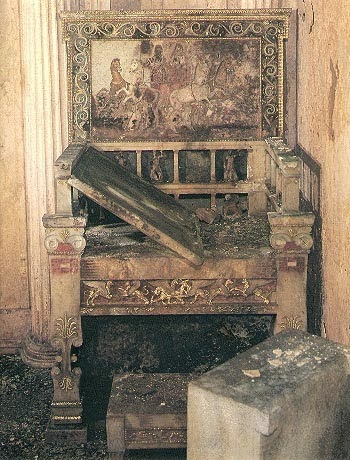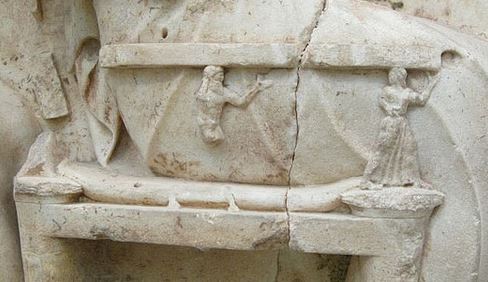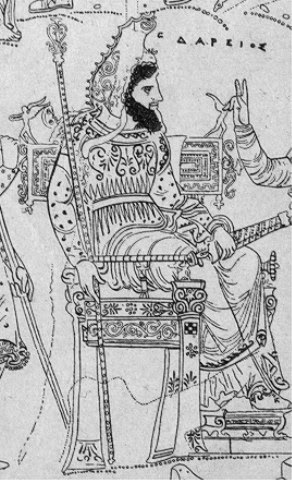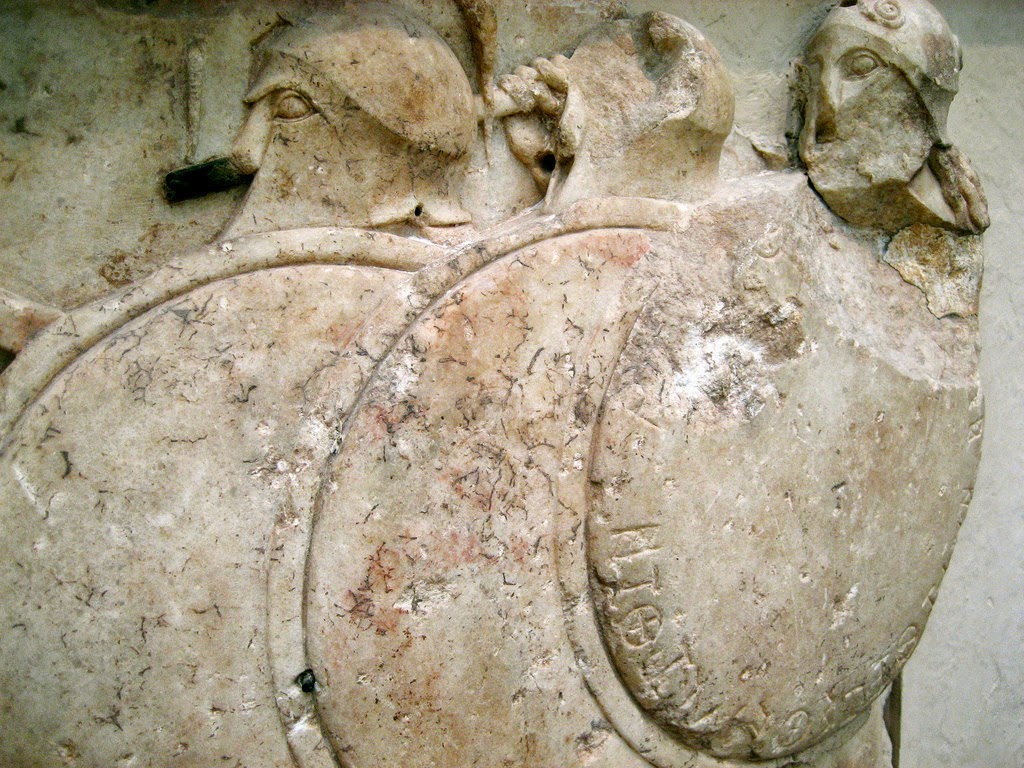By Dorothy King
Although the throne in the so-called Tomb of Eurydice at Vergina has been receiving the most attention recently, there are a number of other representations of thrones with small Caryatids in the secondary arts. What's interesting is that in earlier examples the thrones are used by Persians or 'barbarians' but in both Macedonian and Thracian burials they seem to be linked to the burials of important women.



Whilst vases were regularly labelled with names, this was rarer in architectural sculpture after the Archaic period, and the use of labels on fourth century and Hellenistic monuments can be seen as an archaising feature.
This photograph by Josh Clark (source) of the warriors on the Siphnian frieze shows how they were named on the edges of their shields so that they could be identified by the onlooker:

Although inscriptions ceased to be popular on architectural sculpture after the Persian Wars, paint probably continued to be used. Ancient sources such as Pausanias could 'identify' the figures in pediments, and this, along with the tales told by sanctuary guides, is one logical explanation.
Real shields were of course inscribed when they were dedicated, for example those that Alexander the Great attached to the external frieze of the Parthenon.
For those interested in learning more about Delphi, I highly recommend Michael Scott's brilliant recent book:
Delphi: A History of the Center of the Ancient World – Amazon UK
Delphi: A History of the Center of the Ancient World – Amazon US